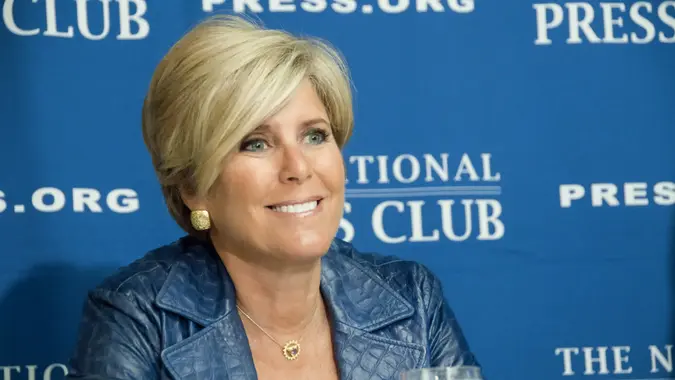Tony Robbins: This Is the ‘Retirement Age’ You Need To Consider

Commitment to Our Readers
GOBankingRates' editorial team is committed to bringing you unbiased reviews and information. We use data-driven methodologies to evaluate financial products and services - our reviews and ratings are not influenced by advertisers. You can read more about our editorial guidelines and our products and services review methodology.

20 Years
Helping You Live Richer

Reviewed
by Experts

Trusted by
Millions of Readers
Are you hung up on trying to decide when to retire? While the average U.S. retirement age is 62 years old, per a 2024 MassMutual retirement study, that doesn’t mean it’s the “right” retirement age for you.
According to author Tony Robbins, as reported by 24/7 Wall Street, there’s something more important than numbers when it comes to retirement. “Financial freedom is far more important than just a number called retirement age,” he said.
Here are more details on Robbins’ take on why achieving financial freedom is more important than the ideal retirement age.
Don’t Just Look at the Numbers
In the U.S., you can theoretically retire at any age — provided you’re financially comfortable enough to do so.
For many people, that means waiting until they’re old enough to collect Social Security (62 years old). Some will wait until they’re 65 since that’s when they can enroll in Medicare. Still, others hold out until they reach the full retirement age — 66 or 67, depending on their year of birth — to get the most out of their Social Security benefits.
But as Tony Robbins pointed out, it’s not always about choosing a specific retirement age. It’s about obtaining financial freedom — something you could potentially do much sooner than your 60s.
What Does Financial Freedom Look Like?
So retirement age is just a number, one that doesn’t necessarily guarantee financial security or freedom in your later years. But what does financial freedom look like?
To start, it means having confidence in your own assets. It means knowing you’ll have enough to live the life you want without stressing about finances.
“This means having enough savings, minimizing debt and ensuring your income sources can support you long-term and you’ve projected it over what you hope is a long timeline in retirement,” said Brian Harrison, president and head of consumer product at SAVVI Financial. “Feeling confident and free comes with having a sense that regardless of short-term ups and downs in the economy, your plan remains on track for the long term.”
The actual numbers are something you’ll need to work out for yourself — or with the help of a financial advisor. You might feel comfortable with $2 million in assets. Or you might need $5 million to sustain your desired lifestyle.
Follow the 4% Rule
One of the most common rules of retirement is the “4% rule.” It’s not a one-size-fits-all solution to retirement planning, but it can help.
With this rule, you should be able to live on 4% of your retirement savings and investments each year (adjusting for inflation).
If you don’t like that rule, you can always use the “25x rule.” Simply calculate how much you plan to spend each year in retirement and multiply that by 25. If you think you’ll need $100,000 per year in retirement, you’ll need $2.5 million in savings.
Achieving Financial Freedom
Of course, no one retirement savings rule is perfect. You’ll need to prepare for the unexpected to achieve financial freedom.
“Be intentional! Like any goal, it takes planning and sacrifice to prepare for retirement and achieve financial freedom,” said Robert Rickey, CFP, chief growth officer of StraightLine. “This means living within your means or even below it, managing debt, saving and investing regularly, and knowing exactly what you want from retirement. If you do these things, you will be in a much better position to retire on your terms.”
 Written by
Written by  Edited by
Edited by 
























